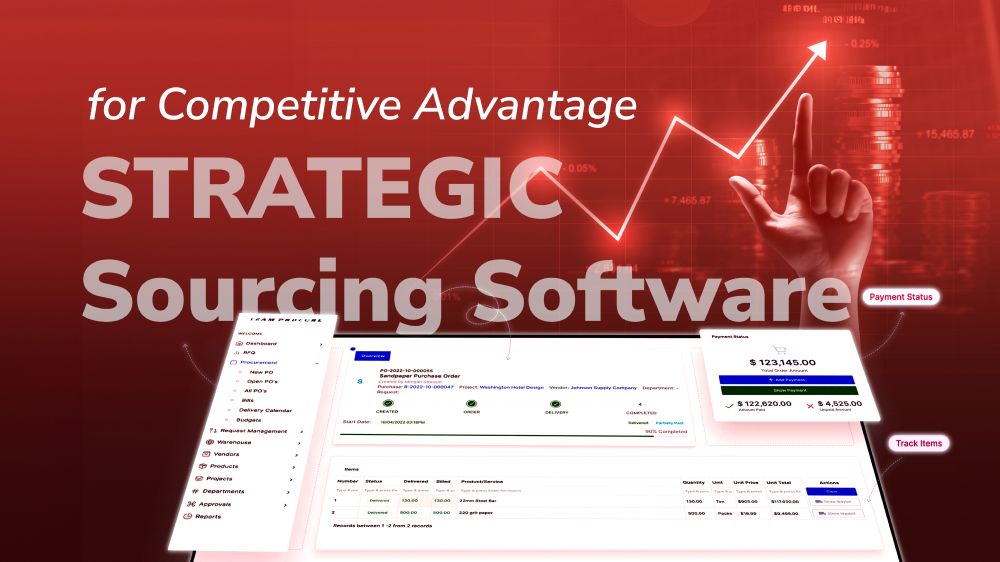A Detailed Breakdown of IT Outsourcing Costs in 2024

Content Map
More chaptersAs a way to strike a balance between investing in technology and maintaining budgetary control without incurring the full burden of in-house development costs, outsourcing services have emerged as a strategic solution for businesses regardless of size in recent years.
However, budget concerns make many business organizations hesitate even before starting. Evaluating the cost of IT outsourcing is a daunting task, and the exact budget to use for services provided by third parties is different from company to company. If there is no general formula, how do you estimate IT outsourcing costs? Yes, through factors that can affect your entire development process and financial plans.
In addition to visible factors such as the project complexity that can impact the cost of outsourcing, several hidden elements can significantly influence the overall financial implications. Some may surprise you. Read on to make informed decisions and effectively manage your budget plans.
Key Takeaways
- IT outsourcing costs can range from a few thousand dollars for small projects to several million dollars for large-scale initiatives.
- Choosing quality software development rather than low-cost is a smart move to save money in the long run.
- The determination of whether IT outsourcing costs are expensive or not depends on a multitude of factors related to business requirements.
- The emergence of hidden expenses indicates that you might be overpaying for outsourcing services.
Key Factors Influencing Software Development Outsourcing Costs
The budget is the cornerstone that underpins every aspect of a business operation. As the cost of IT outsourcing is a very subjective metric, there is no fixed or one-size-fits-all estimation. The difference in company needs and project requirements has created real price diversity for such a business practice. Below are some undeniable key factors that have an important impact on your outsourcing costs.
Pricing Models
A pricing model defines your access to the service provider’s expertise and resources. There are three common types: fixed-cost model, extended staff, and dedicated team. Each of them offers distinct considerations that impact the overall cost structure of outsourcing arrangements.
Fixed-cost Model
If your IT department operates on a rigid budget with well-known needs, this model may be for you. Under a fixed-cost model, you pay a fixed amount for short-term projects with a clearly defined scope of work or long-term projects with distinct phases once the result is delivered at an agreed time. As the outsourcing team is entirely managed by the services providers, the third-party vendors bear full responsibility for the project’s success.
However, the Managed Services Provider (MSP) is only responsible for completing the tasks agreed upon in the contract. Any changes or additional requirements that arise during the cooperation process may result in extra charges, potentially affecting the overall project cost.
Extended Staff Model (Staff Augmentation)
If your IT department must meet tight deadlines or temporarily relieve skill shortages without a clear idea about the long term, consider an extended staff model. The service provider adds a handful of staff to your existing IT department to extend your current capability. The outsourced team may provide on-site support or collaborate remotely. The service pricing includes a deposit, salaries or hourly rates, overtime, travel & related fees (if on-site).
This model suits projects that need in-house managerial control. It may sound similar to working with freelancers, but it saves you more business resources since the outsourcing vendor does the hiring for you. While the staff augmentation model allows for cost efficiency and adaptability, its overall cost can fluctuate based on the duration and resource utilization intensity.
Dedicated Team Model

If you have a sizable project requiring a fully customized solution and a long-term goal, opting for a dedicated team model is the best choice. With this model, you have a specialized team of professionals exclusively working on your projects for a specified period without the hassle of hiring and training. In exchange, it commands higher initial costs compared to other models to cover full teams with project managers, business analysts, software engineers, QA testers, and other specialists if needed. However, you receive cost-saving benefits over the long term through enhanced productivity and efficiency.
The service-specific pricing depends on your project scope. Because of the many variables involved, it’s necessary to negotiate with the outsourcing provider at least months before the project begins. During this time, it’s essential to develop a good working relationship with the vendor to understand how they work and whether it’s a good match for your existing business operations.
Staffing Capability
While pricing models specify the scale of the outsourcing services, the outsourced team’s staffing capability determines the specific price range.
Experience
Developers’ experience plays an important role in determining IT outsourcing costs due to its direct impact on project quality, efficiency, and overall delivery. While highly experienced coders with a wealth of knowledge have the ability to navigate complex tasks efficiently and deliver high-quality results that meet or exceed client expectations, they often require higher rates upfront. In contrast, less experienced ones, although lacking the depth of understanding or problem-solving skills, offer much more competitive rates.
As seniors were once juniors, juniors need time to become seniors through practice and cultivation. Choosing employees with whatever level of experience depends mainly on the vacancy requirements and the company’s budget. However, most projects require at least a pair of senior or middle engineers and a junior engineer to form a team of technical and business specialists, reducing the total cost of ownership and enhancing the return on investment.
Personnel is one of the most critical assets an outsourcing company possesses, which in turn may bear unintended consequences on your projects. So make sure you’re aware of their workplace experience, even when they’re not under your direct employment.
Geographical Location
Where in the world is the outsourced team located? Geographical location has a significant bearing on prices because of the differences in living costs between emerging and developed economies, as well as between metropolitan cities and small towns. Most often, countries that are positioned in Latin America, Eastern Europe, and Asia-Pacific are three global outsourcing hubs known for affordable prices, serving clients in more developed economies. In particular, each country under the offer hourly rates is different, creating diversity in labor hiring prices in each of the above regions.
If your company is in a more developed economy, offshore outsourcing may promise attractive affordability but also consider the trade-off: time zone difference. However, this trade-off is not a problem if your IT service provider is able to handle it well. Can they help you set up remote workflow and communication channels that allow space for questions, feedback, and updates? You may favor the service provider who is competent at managing these communication barriers, even if their pricing may be on the higher side. As a crucial part of their expertise in outsourcing IT services, good communication is worth the extra charge because it helps you get prepared for surprises (read: extra charges) down the line.
Project-related Factors
These are factors that depend mainly on your specific needs when seeking help from customer service operations to generate business growth.
Project Complexity
The complexity of the project deeply affects IT outsourcing costs. Unlike simple business ideas that only require basic features, complex projects often involve multifaceted functionalities, integration challenges, and considerable customizations. As a result, outsourcing such projects requires a higher level of expertise and specialized skills to successfully meet the project objectives.
Complex IT projects not only lead to higher labor costs used for recruiting skilled development team members with niche skills and experience but also affect the project duration, involving multiple iterations to ensure that the final deliverables meet the quality standards. All of them, when combined together, further contribute to increased outsourcing expenses over time.
Timeline and Urgency
The urgency to deliver results within an accelerated timeline can result in higher IT outsourcing costs. In order to speed up product completion and meet accelerated client expectations, third-party vendors need to reallocate all resources used for the project. This process may require assigning more developers, testers, and other specialists to expedite tasks and ensure timely delivery. Instead of working at a normal pace, they are forced to work overtime or prioritize tasks to accelerate the business processes. More team members lead to higher labor costs, and overtime work leads to overtime pay rates or additional compensation for expedited services, which are all factors that incur increased project expenses.
The requirement of strict timelines causes businesses to have many opportunities to face quality issues if they do not manage projects effectively. Once the risks of cybersecurity and errors appear, outsourcing vendors have no choice but to implement risk management measures and thorough testing to ensure on-time delivery, which can increase project costs to account for risk mitigation strategies.
Hidden Costs Found in IT Outsource Projects

It is undeniable that IT consulting services are cost-effective methods to manage your company’s IT needs. However, whether you like it or not, there are often unexpected expenses related to outsourcing that can quickly add up to your existing financial strategy. Your responsibility is to carefully consider all potential costs before signing any outsourcing contract to reduce the likelihood of budget overruns.
Below are some typical hidden costs that may not be immediately evident but potentially arise at any phase during development.
- Change Management and Scope Creep: Businesses always evolve to adapt to new market trends and technological advancements. Unfortunately, unforeseen changes in scope creep and project requirements are among the top reasons leading to delays and extra work, contributing to increased outsourcing costs.
- Quality of Code and Maintenance Costs: Inefficient development practices and poor-quality code can lead to higher maintenance costs in the long run due to reworking and ongoing maintenance expenses post-project completion.
- Intellectual Property Protection and Security Compliance: Sensitive data cannot protect itself. That is why businesses, regardless of size, must invest in cybersecurity measures and data protection protocols to safeguard intellectual property and ensure data security. With complicated tasks related to law, companies may even seek legal consultants’ help to comply with regulatory requirements, which adds additional cost to IT outsourcing.
- Vendor Selection and Due Diligence: The process of choosing the right vendor is more than a daunting task when requiring both internal time and resources. The cost of conducting a comprehensive background check and implementing due diligence activities for potential outsourcing partners should be factored into the overall outsourcing budget.
- Cultural and Communication Challenges: Working with offshore and nearshore developers may be a cost-saving option due to their lower standard of living. However, shortcomings like cultural differences and communication barriers between the client and the outsourcing partner can add up to IT outsourcing costs in the long run as businesses are required to invest in cross-cultural training and communication tools.
How to Optimize the Costs of IT Outsourcing Services

There are some solutions that may help you to optimize IT outsourcing costs.
Choose Quality Software Development Rather Than Low-cost
A software development project may take 3 to 6 months, costing from a dozen thousand to a hundred thousand dollars. To optimize the costs, choose a managed service provider that implements Agile and DevOps practices to allow timely feedback and efficient collaboration between developers, designers, and stakeholders.
If the software product contributes to your competitive edge, do consider opting for high quality rather than cost-cutting. Quality software saves money on later testing and maintenance. This is a value judgment on whether you would rather pay for quality now or pay for testing and upgrades later.
Taking advantage of templates, existing solutions, or open-source software may save you time and money, especially if the project doesn’t require groundbreaking technology. This works particularly well for solutions that have been on the market for a while, such as ERP or eCommerce. Improving, updating, or adding customized features takes less time to ideate and explore. Want to build a piece of software that responds to the latest market research without having to bear the risks of innovation? Upgrading outdated software rather than brand-new development may relieve the burden on your outsourcing budget.
The value of a piece of software is more than just clean codes that work. For larger projects, have clear priorities, documentation, and market research to make sure the software product fulfills your business goals. It is worth hiring a business analyst to deal with these issues if you don’t have anyone in-house. Business analysts and project managers manage the relationships between you - the client - and technical staff to align mismatched expectations and handle the biggest challenge in software development - adapting to changing requirements.
Quality Assurance and Software Testing Costs: The Earlier, The Better
Implementing testing from the beginning of the project optimizes the man-hour of each developer and gets a higher ROI in the long run. Hiring at least a QA tester for every 6 to 10 engineers, depending on the scale, is a necessity, not an extra cost. Treating quality assurance as an afterthought risks higher costs caused by the delays when the staff has to go back to previous versions to fix bugs that prevent timely progress.
Ask your outsourcing providers about how they strike the right balance between manual and automated testing tools. Make sure the testers use various tests to review the codes for functionality, performance, compatibility, responsiveness, security, and user experience.
Prolong The Life of Your Software with Technical Support and Maintenance
Software maintenance may cost you more than software development without smart planning because of its open-ended nature. Like a vehicle or a house, if a software product is old or poorly developed, it requires more costly maintenance. Common managed services include software support and software maintenance.
Software support is reactive and ad-hoc. It identifies issues and solves them as they arise, such as bugs, system errors, log-in failures, etc. Support is quite similar to corrective maintenance - it’s maintenance at a minimal level.
Software maintenance is proactive and routine. These services monitor and update the product to respond to feedback or potential external changes. Here are the types of maintenance in order of complexity:
- Adaptive maintenance: updates the software to adapt to changing IT environment. This is to keep up with new developments and technologies.
- Perfective maintenance: incorporates user feedback to improve performance and maintainability. This doesn’t mean adding a new feature but to re-prioritize some existing features to enhance the user experience.
- Preventive maintenance: upgrades the software in anticipation of potential problems or requirements as the product evolves.
These types of maintenance can be implemented for parts of your software product, such as database, configuration, cloud events, etc. Because of the needs-based nature of maintenance, it is hard to estimate the costs. To save money, invest in quality software development and testing to keep maintenance costs controllable, then implement regular updates and set clear maintenance priorities to avoid incurring revenue losses caused by low-performing software.
Cost of IT Outsourcing: Is It Worth It?
Project outsourcing isn’t just about cost savings but a strategic advantage. For small businesses with limited resources, the quick access to cutting-edge tools, systems, processes, and talent of established outsourcing companies can fasten their speed in responding to the fast-evolving IT environment. Mid-sized companies have been adopting advanced technology to improve operational efficiency and manage digital risks, among others. So, the question for your own company is not if you should outsource but how much. How much of your business operations should be delegated to outsourced teams so the in-house team can focus on your core competencies?
Ultimately, IT outsourcing may save resources not just in IT but also in other non-IT business operations. No two outsourcing services are the same. Factors such as pricing models, industry experience, and location all influence the costs of your initial engagement with an outsourcing company. Your particular IT needs then determine the ongoing expenses throughout the software development life cycle.
To optimize the costs of outsourcing services, get in touch early, choose vendors with a transparent pricing guide and relevant industry experience, prioritize cutting-edge technology, and budget for regular maintenance. If you are seeking a reliable outsourcing partner, look no further than Orient Software. As a customer-centric organization, we prioritize transparency and collaboration to ensure a successful and rewarding outsourcing engagement. Leave us a message to get a free quote and see how we can leverage your business ideas from better to best.







